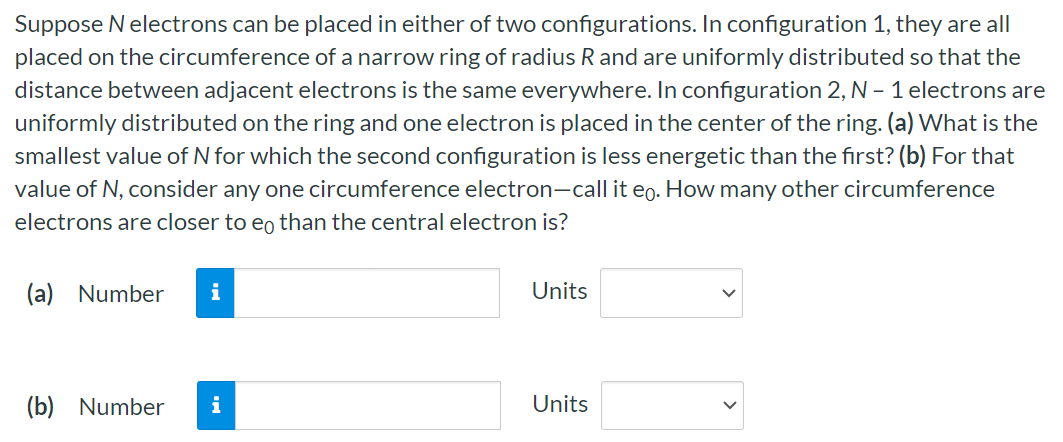Suppose N electrons can be placed in either of two configurations. In configuration 1 , they are all placed on the circumference of a narrow ring of radius R and are uniformly distributed so that the distance between adjacent electrons is the same everywhere. In configuration 2,N − 1 electrons are uniformly distributed on the ring and one electron is placed in the center of the ring. (a) What is the smallest value of N for which the second configuration is less energetic than the first? (b) For that value of N, consider any one circumference electron-call it e0. How many other circumference electrons are closer to e0 than the central electron is? (a) Number Units (b) Number Units
